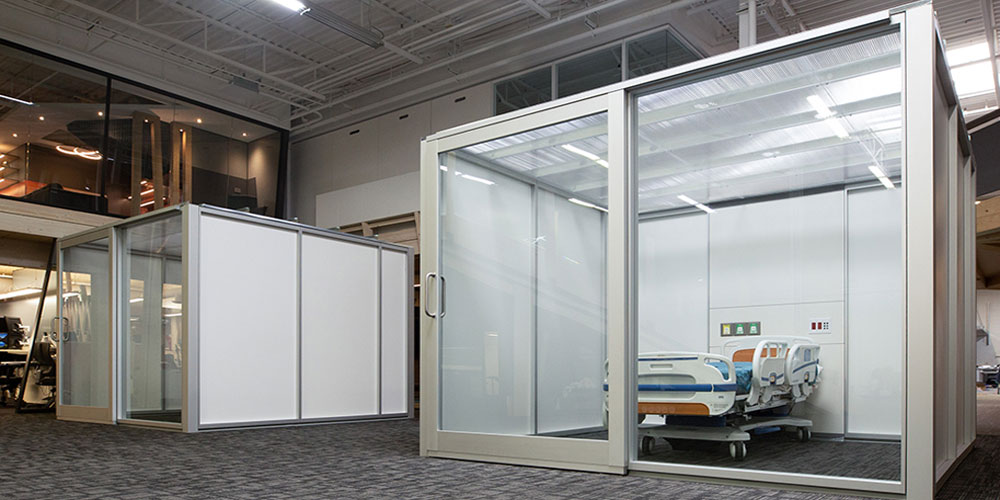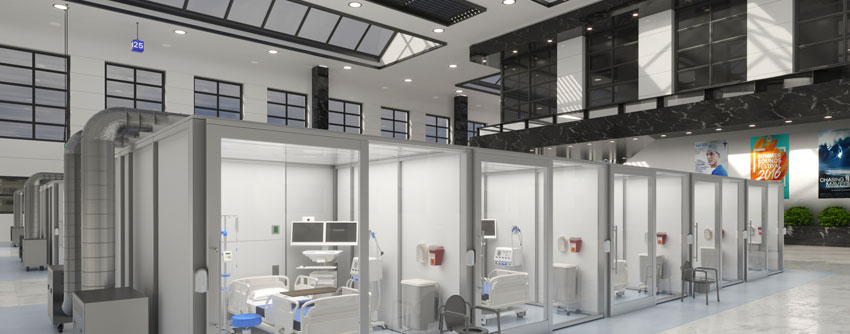
In the ever-evolving landscape of healthcare, the importance of isolation rooms cannot be overstated. These specialised spaces are designed to serve a critical function: to isolate patients with contagious diseases or conditions from the general patient population. The primary purpose of the healthcare isolation room is not just to protect the patient but to safeguard the health and well-being of healthcare workers, other patients, and the community at large.

Healthcare Isolation Room
1. Containment of Infectious Agents: The foremost purpose of an isolation room is to contain infectious agents. Patients with contagious diseases like tuberculosis, COVID-19, or drug-resistant bacteria need to be isolated to prevent the spread of the disease to others. These rooms are equipped with specialised ventilation systems to minimise the escape of airborne pathogens and to ensure the air is effectively filtered.
2. Protecting Healthcare Workers: Healthcare professionals are on the frontlines of patient care and are at an increased risk of exposure to contagious diseases. Isolation rooms act as a barrier between the healthcare workers and patients, reducing the chances of transmission. Properly equipped isolation rooms provide healthcare staff with the necessary protection, including personal protective equipment (PPE) and training.
3. Preventing Cross-Contamination: Isolation rooms play a vital role in preventing cross-contamination within the healthcare facility. They ensure that patients with different medical conditions are not exposed to each other’s diseases, reducing the risk of nosocomial (hospital-acquired) infections. This is especially crucial in settings such as hospitals, long-term care facilities, and emergency departments.
4. Enhancing Patient Care: While isolation rooms primarily serve as protective barriers, they also offer a controlled environment for the delivery of specialised care to patients with contagious diseases. Medical staff can provide the necessary treatment, monitoring, and support within the isolation room, ensuring that patients receive the best care possible while minimising the risk to others.
5. Promoting Public Health: Beyond the healthcare facility, isolation rooms play a crucial role in preventing the community spread of contagious diseases. By isolating infected patients promptly, healthcare facilities help curb the transmission of diseases and contribute to public health efforts to contain outbreaks.
6. Research and Containment: Isolation rooms are not limited to clinical care. They are also instrumental in research and containment efforts during disease outbreaks. Scientists can study the pathogens in a controlled environment, and public health agencies can use isolation rooms to quarantine individuals who have been exposed to contagious diseases to prevent further spread.
7. Preparedness for Emergencies: Healthcare isolation rooms are an essential component of disaster preparedness. They can be rapidly scaled up during epidemics or pandemics to accommodate an increased number of patients requiring isolation and treatment.
In summary, the primary purpose of healthcare isolation rooms is to protect patients, healthcare workers, and the community from the spread of contagious diseases. These specialised spaces are an integral part of infection control measures in healthcare settings, ensuring that patients receive appropriate care while minimising the risk of transmission.
As our understanding of infectious diseases evolves, so too will the design and use of isolation rooms to meet the ongoing challenges of healthcare.